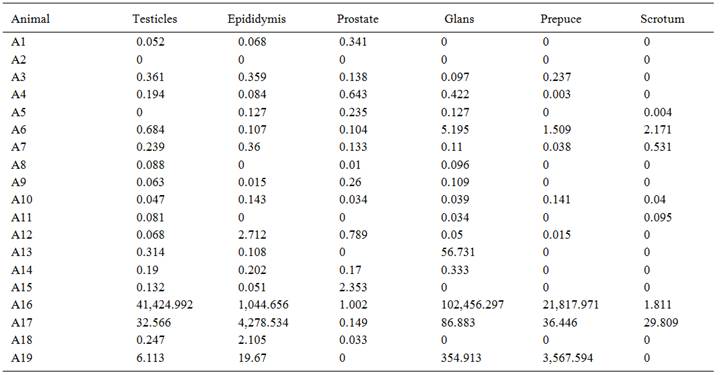ABSTRACT:
Canine visceral leishmaniasisis an important disease caused by the protozoon Leishmania infantum which affects several organs and systems, including the genital tract. The L. infantum tropism to the male genital system and correlation among parasite load, immunohistochemistry detection and structural changes in these organs is controversy. Therefore, the aim of this study was to evaluate this correlation in the genital organs of the male dogs naturally infected with L. infantum. Samples from testicles, epididymis, prostate, glans penis, prepuce and scrotum were collected from 19 positive adult dogs. Structural changes were observed in the testicles (5.2%), epididymis (2.6%), prepuce (5.2%) and scrotum (5.2%) of the samples positive at immunohistochemistry examination. Conversely, similar structural changes were observed in all tissues negative at immunohistochemistry analysis. Moreover, L. infantum DNA was detected in all organs with the highest parasite load found in testicles, epididymis, and prostate gland. , Testicles had the highest parasite load but the lowest number of inflammatory lesions. These inflammatory lesions were observed in all organs of reproductive system of dogs; however, no correlation was observed between the parasite load and inflammatory lesions of dogs naturally infected with L. infantum.
Key words:
canine visceral leishmaniasis; structural changes; genital pathology; immunohistochemistry

 Thumbnail
Thumbnail


